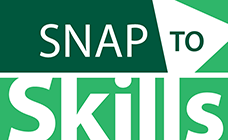This resource is for SNAP E&T practitioners to learn how behavioral science can provide new insights into how to improve their programs. This section of the website will regularly feature tips that can be used to address common issues and challenges that emerge in recruiting and engaging participants to SNAP E&T programs. These tips will draw from behavioral science as well as best practices in the delivery of human services.
What is Behavioral Science?
Simply put, behavioral science looks at how and why people make choices. Used increasingly by policy makers and practitioners, a behavioral approach re-examines programs and services from the participant perspective.
Behavioral scientists use a diagnostic process and specially designed tools to help service providers reveal barriers to engagement, such as points where participants become overwhelmed or confused. Within the context of a human service programs, behavioral scientists may ask such questions as, what steps does an individual need to complete in order to receive full program services, where along a process does participation drop off, or where do participants and staff encounter successes or challenges? Ultimately, they draw on evidence about what we know of human behavior and work with practitioners to co-design new solutions to maximize participation.
Why Does Behavioral Science Matter for Your SNAP E&T Program?
Across the country, SNAP E&T programs offer a range of employment services, including supportive services that are often underutilized by the participants they are designed to help. Behavioral science can help program operators understand why people may not show up, or might initially show interest, but then do not continue to participate. Each step in a program, from first learning about it to completing a training, is a choice. And even high-performing programs may involve procedures that make engagement and success hard for clients to achieve. Often, for instance, participants do not fully understand eligibility requirements or cannot figure out how to initiate their next required action. In situations like these –and many others—behavioral science can help program operators to identify and overcome barriers to participation.
Applying strategies, such as changing the timing or content of communications, can and has increased attendance and engagement with a range of social services programs. For instance, the Los Angeles county TANF program, a partner in the Behavioral Interventions to Advance Self-Sufficiency (BIAS) project, learned that some participants disengaged because of their use of a complex appointment letter, as well as challenges participants faced arranging transportation and childcare. The team tackled these barriers with a new behaviorally designed approach and improved compliance with program requirements.
5 Steps to Improve SNAP E&T Participant Engagement
In FY 2020-21, SNAP to Skills is using a behavioral science approach in providing technical assistance to seven States to improve participation and engagement in their SNAP E&T programs. Through this approach, S2S works with State agencies and their partners to identify challenges that limit engagement and implement solutions to address these challenges, using metrics to improve performance.
FULL 5-STEP PROCESS: This infographic portrays the full 5-step process S2S will use to work with participating States and uses an example to show how this process could be used in a real SNAP E&T program.
STEP 1: This infographic dives deeper into the first step of the 5-phase process: Define the Problem. In this phase, State teams develop Problem Statements based on a specific SNAP E&T recruitment, enrollment, or participation problem they would like to solve.
STEP 2: This infographic represents the second step of the 5-phase process: Diagnose/Analyze the Problem. In this phase, State teams gather and integrate information from SNAP clients’ lived experience as well as program data to deepen their understanding of an engagement problem, laying the groundwork for later developing a well-informed solution to the problem.
STEP 3: This infographic dives deeper into the third step of the 5-phase process: Design. In this phase, State teams brainstorm and prioritize solution ideas that could potentially improve participant engagement and address participant drop-offs.
STEP 4 &5: This infographic dives deeper into the fourth and fifth steps of the 5-phase process: Implement and Review/Refine. In these steps, a State team creates a prototype for its solution to improve participant engagement and address participant drop-offs, collects feedback from staff members and participants on the prototype, and launches a pilot that is informed by the data it collects.
Tips for Using Behavioral Science to Improve Participant Engagement in SNAP E&T
Read our tips to improve participation and engagement in the SNAP E&T program.


